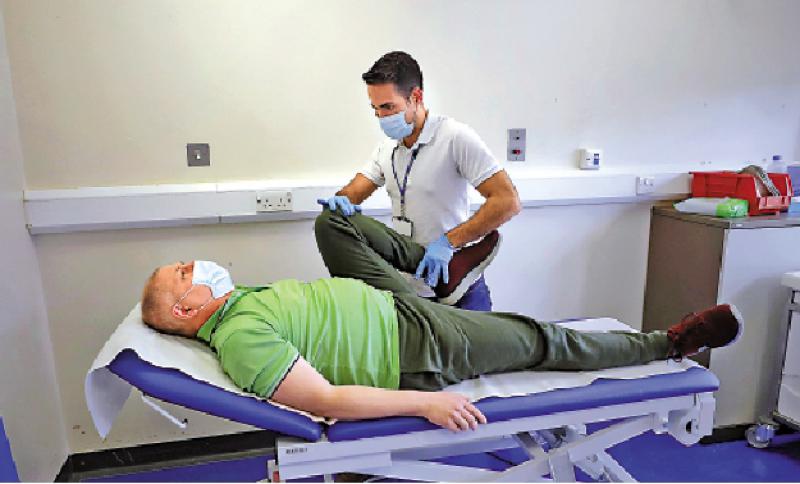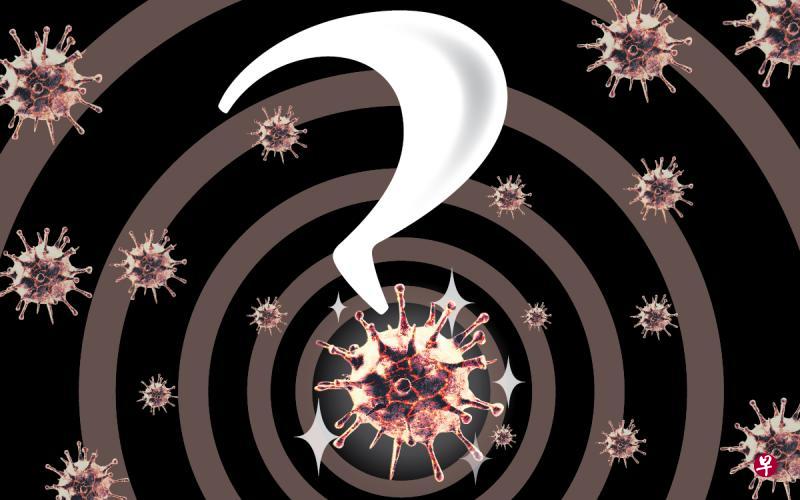哈佛研究发现美国有1.6万起疗养院冠病死例未被报告
文 / 张佳莹
9/11/2021
(早报讯)哈佛大学研究员凯伦(Karen Shen)领导的一份报告显示,在该大流行病的最初几个月,美国有近1万6000起冠病疗养院的死亡病例没有被报告。
该报告于周四发表在美国医学期刊JAMA Network Open,报告发现,缺失的数字占据了2020年所有疗养院死亡人数的14%。
通过研究20个州的数据,该研究发现,联邦数据中没有记录44%州卫生部门统计的冠病病例,还有40%的疗养院冠病死亡病例。
研究人员说:“这可能表明,疗养院在大流行的早期普遍无法可靠地收集数据,或者说报告较少病例和死亡的压力在所有设施中是普遍存在的。”
New Tally Adds 16,000 Nursing Home Residents Lost to COVID
By Steven Reinberg | HealthDay News
9/11/2021
The number of cases and deaths from COVID-19 in U.S. nursing homes appears to have been grossly underestimated.
According to a new study, that’s because U.S. federal guidelines did not require nursing homes to report cases and deaths until May 24, 2020, months after the pandemic began.
“Because of the delay in the federal reporting system for cases and deaths in nursing homes, there were roughly 68,000 unreported cases and 16,000 unreported deaths from COVID-19 in the early months of the pandemic,” said lead researcher Karen Shen, an applied public and labor economist at Harvard University.
“Accounting for underreporting changes the understanding of the toll on nursing homes across places and across facilities,” she added.
For instance, using the reported figures without factoring in the delay implies similar numbers of nursing home residents died in New York (5,776) and California (5,622), or about 5 deaths for every 100 beds in both states, Shen said.
Once the unreported deaths were accounted for, however, the figures changed dramatically, she said.
“We estimate that nursing homes in New York experienced 9,276 deaths [8 deaths per 100 beds], compared with 6,487 in California [5.5 deaths per 100 beds],” Shen said.
The delay in federal reporting substantially affected nursing home counts, and Shen said the data should not be used without some qualification or correction.
“We would also hope that in future situations, there would be a faster and clearer data collection effort that would avoid some of the confusion that resulted during this pandemic,” she added.
For the new study, Shen and colleagues compared COVID cases and deaths reported to the U.S. National Healthcare Safety Network (NHSN) and state health departments by May 31, 2020.
The sample included numbers for 20 states and nearly 12,000 nursing homes. Researchers expanded these data to include more than 15,000 nursing homes nationwide.
On average, 44% of COVID cases and 40% of deaths were reported to state health departments, but not to the NHSN, the study found.
That suggests more than 68,600 cases and more than 16,600 deaths were not reported to NHSN.
But, Shen said, these figures may only be a fraction of unreported COVID cases and deaths in nursing homes.
“There may be additional sources of undercounting, like facilities choosing not to report deaths or not knowing the cause of death,” Shen said. “But I am not sure I know enough to have a guess at how big that undercount is likely to be.”
The new research was published online Sept. 9 in JAMA Network Open.
Infectious disease expert Dr. Marc Siegel of NYU Langone Medical Center in New York City was not surprised by the undercounts.
Infection can spread like wildfire in nursing homes, said Siegel, who wasn’t part of the study. Plus, nursing homes are not hospitals with the added precautions hospitals take.
“People in nursing homes tend to be high risk because they’re run-down, they have underlying problems, and are at high risk of this virus,” he said. “So the idea that the number of cases and the number of deaths in nursing homes was underreported is not in any way surprising.”
At the time of the study, Siegel added, there was no vaccine for COVID. He stressed that it’s important now that everyone working in a nursing home get their shots.
“Vaccine is so important, and to find out that the health care workers in nursing homes are not fully vaccinated is very disturbing,” Siegel said. “You need frequent testing, you need isolation — it’s very simple and a lot of it is not being done properly.”
The Biden administration announced Aug. 18 that nursing home staffers must be vaccinated against COVID as a condition for the facilities to receive federal Medicare and Medicaid funding.
More information
To learn more about nursing homes and COVID-19 deaths, visit the U.S. Centers for Disease Control and Prevention.
SOURCES: Karen Shen, PhD, applied public and labor economist, Harvard University, Cambridge, Mass.; Marc Siegel, MD, clinical professor, medicine, NYU Langone Medical Center, New York City; JAMA Network Open, Sept. 9, 2021, online
近半染疫者一年后仍有后遗症
大公报
8/27/2021

【大公报讯】据《刺针》期刊报道:英国医学期刊《刺针》27日发布中国研究显示,约半数新冠患者出院一年后仍受至少一种“长期新冠症状”折磨,最常见的是疲劳或肌肉无力。
《刺针》刊登的这项研究追踪了2020年1月至5月期间从中国武汉金银潭医院出院的近1300名新冠患者,并于6、12个月后跟访。研究发现,有68%的患者在出院6个月后出现至少一种长期新冠症状,12个月后比例仍有49%。其中,呼吸急促症状出现概率自出院后6个月的26%增加到12个月后的30%。研究同时发现,女性受疲劳或持续肌肉无力之苦的可能性比男性高出43%,女性比男性更容易出现焦虑或抑郁症状。
《刺针》在与研究一同发布的社论中指出,“对许多病人而言,完全康复得花上超过一年时间”,也称“长期新冠症状是现代医学的首要挑战”。据英国国家统计署统计,截至7月4日,英国有约94.5万人报告出现长期新冠症状,约占患者总数的1/5,包括3.4万名2至16岁儿童,而该国35至69岁女性是最易出现长期新冠症状的群体。
Study: Half of COVID-19 survivors have at least 1 symptom a year later
CIDRAP – Center for Infectious Disease Research and Policy
University of Minnesota
8/27/2021

Roughly half of 1,276 adult COVID-19 survivors in Wuhan, China, still had at least one symptom—with a third still reporting shortness of breath—a year after their release from the hospital, finds a single-center study yesterday in The Lancet.
Led by researchers at Capital Medical University in Beijing, the study involved evaluating and interviewing COVID-19 survivors 6 and 12 months after symptom onset (Jan 7 to May 29, 2020).
Median age was 59 years, 53% were men, and median follow-up time was 185 days for the first visit and 349 for the second. A matched control group included 3,383 adults never infected with SARS-CoV-2.
Heart, breathing, mental health problems
At 6 months, 68% of patients still had at least one persistent COVID-19 symptom (eg, sleep problems, heart palpitations, joint pain, chest pain), falling to 49% at 12 months. But the proportion of patients with shortness of breath rose slightly over that period, from 26% to 30%.
Also, more patients reported anxiety or depression at 12 months than at 6 months (26% vs 23%). Six-minute walk test results weren’t significantly different at the two visits. At 12 months, three patients had had an ischemic stroke, and one had developed stable angina pectoris (chest pain due to coronary artery disease).
At 6 months, 353 study participants received a chest computed tomography (CT) scan, with 52.7% showing lung abnormalities. Among the 118 patients who completed a 12-month scan, the proportion of patients with abnormalities fell substantially across all groups but remained high, especially in those who had been the most critically ill (87%).
Relative to men, women had an odds ratio (OR) of 1.43 for fatigue or muscle weakness, 2.00 for anxiety or depression, and 2.97 for impaired lung diffusion (the result of a reduction in lung perfusion and alveolar-capillary membrane conductance). Increasing age was positively associated with higher risk of anxiety or depression (OR, 1.18) and impaired diffusion (OR, 1.30), especially among those with the most severe acute illness.
At 12 months, hospitalized COVID-19 patients reported more problems with mobility, pain or discomfort, and anxiety or depression and had more prevalent symptoms than control patients. Corticosteroid treatment during the acute illness was linked to increased risk of fatigue or muscle weakness (OR, 1.51), while intravenous immunoglobulin treatment lowered that risk (OR, 0.65).
Among 479 patients who were employed before they had COVID-19, 88% had returned to their work at 12 months, 76% of them at the same level of work. Of the 12% who didn’t return to their work, 32% cited decreased physical function, 25% said they were unwilling to do the same work, and 18% because they were receiving unemployment benefits.
Of the 1,252 COVID-19 patients who reported healthcare usage and work status at 12 months, 18% had visited an outpatient clinic, and 13% were hospitalized, but none were admitted to an intensive care unit. Eleven patients visited the rehabilitation department, and five took part in the professional rehabilitation program to address physical dysfunction.
Long recovery for many
The authors noted that COVID-19 survivors’ health status was lower than that of the control group at 6 and 12 months. “We found that most patients had a good physical and functional recovery during follow-up, and the majority of study participants who were employed before COVID-19 had returned to their original work,” they wrote.
“However, sequelae symptoms, lung diffusion impairment, and radiographic abnormalities persisted to 12 months in some patients, especially in patients who were critically ill during hospital stay.”
In a Lancet news release, senior author Bin Cao, MD, of the National Center for Respiratory Medicine at the China-Japan Friendship Hospital, said that the study has important implications for COVID-19 patient care. “Our findings suggest that recovery for some patients will take longer than one year, and this should be taken into account when planning delivery of healthcare services post-pandemic,” he said.
In a commentary, the Lancet editorial board said that the study highlights the need for more robust health services for COVID-19 long-haulers.
“First, only 0.4 of patients with COVID-19 said that they had participated in a professional rehabilitation programme,” they wrote. “The reason for such low use of rehabilitation services is unclear, but poor recognition of long COVID and lack of clear referral pathways have been common problems worldwide.”
Second, they said, research is urgently needed on the mental health effects of long-haul COVID-19 and persistent symptoms in other patient groups, such as those not admitted to a hospital, younger age-groups, and racial minorities and other disadvantaged groups disproportionately affected by the pandemic.
“The scientific and medical communities must collaborate to explore the mechanism and pathogenesis of long COVID, estimate the global and regional disease burdens, better delineate who is most at risk, understand how vaccines might affect the condition, and find effective treatments via randomized controlled trials,” the board wrote.
武汉严控集体晨晚练、演出、相亲等聚集活动
8/03/2021
武汉市园林和林业局发出今天通知,要求各城市公园加强疫情防控,包括严控集体性的晨晚练、演出、相亲等聚集活动。
根据人民日报客户端消息,通知要求强化入园管理,加强园内的疫情防控。严控集体性的晨晚练、演出、相亲等聚集性活动,原则上不举办规模聚集性活动。对超过10人聚集的人群,公园要及时提醒并劝导其保持安全社交距离。公园室内场所游客和工作人员必须佩戴口罩、测温、验码或登记。
通知还要求相关单位做好公园清洁消毒工作,加强风险部位的管控。对被列入中风险以上街道辖区内的公园,经报所属园林部门同意后,可实行临时闭园措施,闭园期间做好消杀工作。对公园内存在风险隐患的有关场所,可临时关闭。
同时,武汉的公园广场也纷纷取消线下活动,部分公园临时关闭密闭场馆。其中,黄鹤楼公园的落梅轩、白云阁一楼、咖啡馆、餐厅等密闭场馆,已临时关闭。同时取消了落梅轩演出、夜游等线下文化活动。该园还按照相关部门的要求,将公园单日最大游客承载量,由50200人,缩减至25100人。
江汉区后襄河公园今早已对篮球场采取临时关闭措施,并对七个广场舞的晨练团队进行劝退。
武汉各公园广场加强对园区的消杀与保洁,位于中风险地区的汤湖公园今天下午已采取临时闭园措施。
最新研究:冠病可能2019年10月就已在中国出现
6/25/2021

周五发布的一项新研究显示,导致2019冠状病毒疾病(COVID-19)的病毒可能早在2019年10月就开始在中国传播,比在武汉确认的第一个病例早两个月。
据路透社报道,根据发表在国际学术期刊《公共科学图书馆-病原体》(PLOS Pathogens)上的一篇论文,英国肯特大学的研究人员利用环境保护科学的方法,估计SARS-CoV-2最早出现在2019年10月初至11月中旬。
他们估计,该病毒出现的最有可能的日期是2019年11月17日,到2020年1月可能已经在全球蔓延。
中国第一个新冠确诊病例是在2019年12月,与武汉的华南海鲜市场有关。
然而,一些早期的病例与华南海鲜市场没有已知的关联,这意味着SARS-CoV-2在到达该市场之前就已经在传播了。
中国和世界卫生组织(WHO)在3月底发表的一项联合研究承认,在武汉疫情暴发之前,可能已经有零星的人类感染。
在本周一份以预印本形式公布的报告中,西雅图福瑞德哈金森癌症研究中心(Fred Hutchinson Cancer Research Center)的Jesse Bloom重新复原了被删除的早期中国新冠病例的基因序列数据。
数据显示,采自华南市场的样本并不全然具有SARS-CoV-2的代表性,而且是先前流传的祖细胞(progenitor)序列的变种,后者散播至中国其他地区。
美国国家卫生研究院(NIH)向路透证实,研究中使用的样本在2020年3月提交给Sequence Read Archive(SRA),后来在中国调查人员的要求下被删除,中国人员表示将更新这些样本并提交另一个档案。
批评者称,这次删除是中国试图掩盖疫情起源的进一步证据。
“科学家为何要求国际数据库删除那些能让我们了解COVID-19如何在武汉开始的关键数据?”哈佛大学布洛德研究所(Broad Institute)研究员Alina Chan在推特上写道。
澳洲科学家周四在《科学报告》期刊上发表的另一项研究,利用基因组数据显示SARS-CoV-2与人类受体结合的容易程度,远高于其他物种,这表明它在首次出现时已经适应了人类。
报告称,有可能是另一种具有更强亲和力的不明动物作为中间物种,但不能排除病毒从实验室泄漏的假设。
澳洲Westmead医院的传染病专家Dominic Dwyer表示,“很明显早期病毒对人类受体有很高的倾向性,但这并不意味着它们是‘人造的’。”Dwyer是今年赴武汉进行新冠病毒溯源调查的世卫组织团队的成员。
“这样的结论仍然是推测性的,”他说。
澳洲医学研究机构Kirby Institute副教授Stuart Turville对肯特大学的研究作出回应,称仍需要对血清样本进行检测,才能为新冠疫情的起源提供更有力的证据。
“不幸的是,鉴于目前实验室泄漏假设带来的压力以及在中国进行后续研究的敏感性,我们可能还要等一段时间才能看到这样的报告,”他说。
First COVID-19 case could have emerged in China in Oct 2019 – study
By David Stanway
5/25/2021

SHANGHAI, June 25 (Reuters) – The virus that causes COVID-19 could have started spreading in China as early as October 2019, two months before the first case was identified in the central city of Wuhan, a new study showed on Friday.
Researchers from Britain’s University of Kent used methods from conservation science to estimate that SARS-CoV-2 first appeared from early October to mid-November 2019, according to a paper published in the PLOS Pathogens journal.
The most likely date for the virus’s emergence was Nov. 17, 2019, and it had probably already spread globally by January 2020, they estimated.
China’s first official COVID-19 case was in December 2019 and was linked to Wuhan’s Huanan seafood market.
However, some early cases had no known connection with Huanan, implying that SARS-CoV-2 was already circulating before it reached the market.
A joint study published by China and the World Health Organization at the end of March acknowledged there could have been sporadic human infections before the Wuhan outbreak.
In a paper released in preprintform this week, Jesse Bloom of the Fred Hutchinson Cancer Research Center in Seattle recovered deleted sequencing data from early COVID-19 cases in China.
The data showed that samples taken from the Huanan market were “not representative” of SARS-CoV-2 as a whole, and were a variant of a progenitor sequence circulating earlier, which spread to other parts of China.
The U.S. National Institutes of Health confirmed to Reuters that the samples used in the study were submitted to the Sequence Read Archive (SRA) in March 2020 and later deleted at the request of Chinese investigators, who said they would be updated and submitted to another archive.
Critics said the deletion was further evidence that China was trying to cover up the origins of COVID-19.
“Why would scientists ask international databases to delete key data that informs us about how COVID-19 began in Wuhan?” said Alina Chan, a researcher with Harvard’s Broad Institute, writing on Twitter.
Another study by Australian scientists, published on Thursday in the Scientific Reports journal, used genomic data to show SARS-CoV-2 binds to human receptors far more easily than other species, suggesting it was already adapted to humans when it first emerged.
It said it was possible there was another unidentified animal with even stronger affinity that served as an intermediary species, but the hypothesis that it leaked from the lab could not be ruled out.
“While it is clear early viruses had a high propensity for human receptors, that doesn’t mean they were ‘man-made’,” said Dominic Dwyer, infectious disease expert at Australia’s Westmead Hospital who was part of the WHO team investigating COVID-19 in Wuhan this year.
“Such conclusions remain speculative,” he said.
Serum samples still needed to be tested to make a stronger case about COVID-19’s origins, said Stuart Turville, associate professor at the Kirby Institute, an Australian medical research organisation who was responding to the University of Kent study.
“Unfortunately with the current pressure of the lab leak hypothesis and the sensitivities in doing this follow-up research in China, it may be some time till we see reports like that,” he said.
Six Spaces Home Staging

Contact: Hongliang Zhang
Tel: 571-474-8885
Email: zhl19740122@gmail.com




